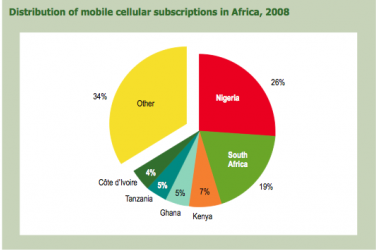“Calm down, madam, it’s just a rat bite.” My doctor friend had told the bewildered and totally shaken professor who’d been rushed in the ER on his dreadful night duty.
The elderly lady had dozed off in front of the TV after eating leaving her hands unwashed. Apparently, a bite had jolted her awake and the first thing that came to her mind was that she’d been bitten by a venomous snake!
Of course she and her folks thought my friend was totally bunkers to have even thought it was a rat! A bladdy rodent?! “Young man you must be an incompetent blah, blah, blah…!” her husband screamed. Threatening to report him to the “high and mightys” and ensure he was relieved of his job.
The woman was even having symptoms of a snake bite – vision problems, speaking and breathing trouble, and numbness! Well, in the end, my Doctor friend was right and they all (old and wise as they were) were dead wrong. The symptoms were somatization, simple hysteria. Funny, eh? I didn’t think so.
“Jus’ ‘cos am young, wear jeans an’ a T-shirt and drive fast, they think i don’t know my job.” He told me. It’s just a fact of life that the young are thought to be unserious, directionless and not worth the bother. (That’s a blog for another day though). But while he related his ordeal, he’d just described me and the rest of my colleagues. Young-gum chewing-jean and T-shirt wearing-back pack carrying clans who called themselves Developers, Designers, UX people, Network experts, whatever.
Once you said to anyone “Am into IT.” Be ready for one of two reactions:
(A) They start thinking “yep, sonny, excuse yourself for all the hours you spend fiddling on your computer and the internet at home while honest hard working people are either at work or asleep.” Or, my favorite,
(B) They go, in their minds, “hmmmm, he’s making a killing robbing some organization(s) blind and keeping them in their ignorance of simple things and tools. Scammer! Legal fraudster!”
It’s, well, an occupational hazard that we accept, carry our laptops and trudge on.
But i am compensated, when i commute around the metropolis and beyond, to find the love that users, both young and old, have for their mobile devices. Phones (Smart and otherwise), Palmtops, iPads, etc. A wise college girl once said “If you have your head raised high while all others are bowed, you should get a BB!” LOL! I’ll like to extend that saying, “… get a smartphone”!
Heads bowed, attention riveted to the glowing screens, fingers tapping out messages, people all over go about their daily businesses dragging away their attentions when absolutely necessary and only for the briefest of times. Its a culture a fellow IT chap aptly named ‘the Ratmode’. I agree the posture reminds one of a rat at work on a nut.
A GPRS enabled phone and a few bytes of data (as little as 10MB for about $0.67) and all troubles and sorrows melt away as users dive into the depths of online infotainment and communication Ratmode style. Social network sites are the first ports of call: Facebook, Twitter, Mixit, 2go, Nimbuzz, Badoo, etc. And I mean etc! Aha! lest I forget the classiest one in these parts, BBM. (I said it, so BB lovers, am on your side.) Aside the Social network sites, there are a million other mobile sites for stuff like music, movies, games, wallpapers, pictures, the works. Our loyal IM applications are never far away too.
It gladdens my heart, that with rat sized bytes, smartphones and applications, the www in a nut in the hands of the user. Africa has been split wide open to the ratmode culture, the internet penetration is largely experienced on the mobile.
The charts above reveal a fascinating trend and I can assure you that those figures are advancing daily in bounds.
Africa is going mobile! Nigeria is going mobile! Developers come up with fresh ideas and products to keep users interested and happy daily. Mobile Web? Bring it on. Mobile App? Let’s tango. Obviously, if you are not mobile, you are nowhere. Simple!
We IT folks are still easy to spot, from a few minutes to a few days observing us, it becomes obvious. Yesterday, a total stranger in a full commuter bus asks me to please help him upload a profile picture from his mobile device to his favorite social network platform! Damn! Spotted again.
From my desk on a rainy morning,
Greg.

